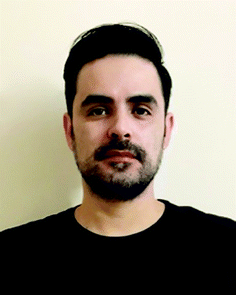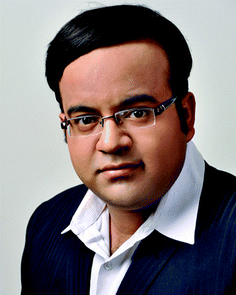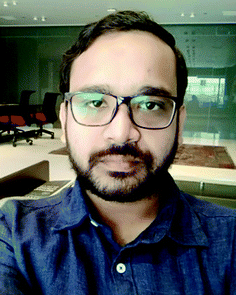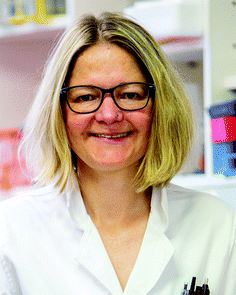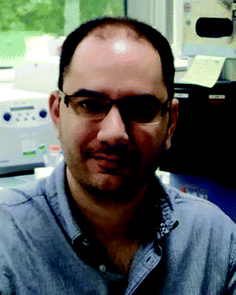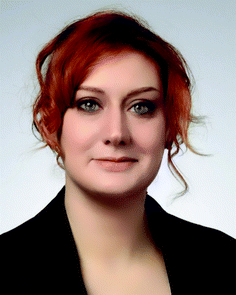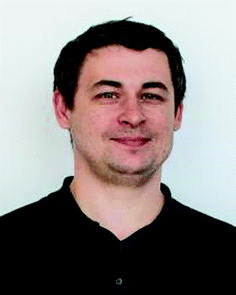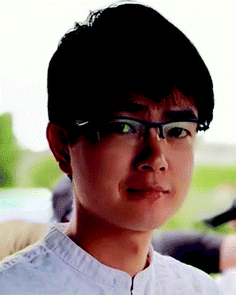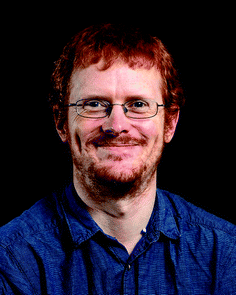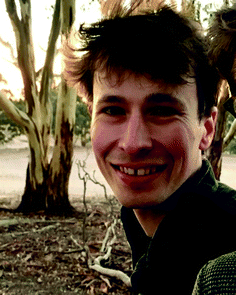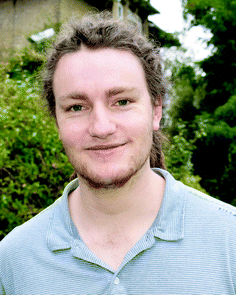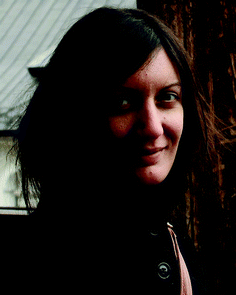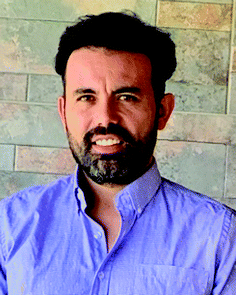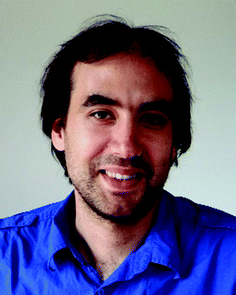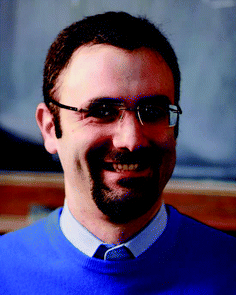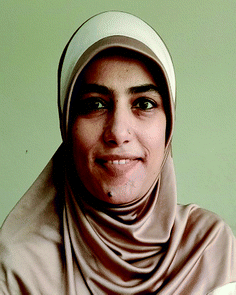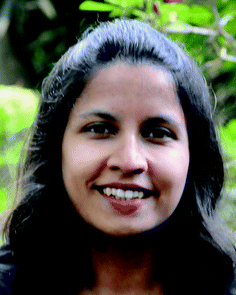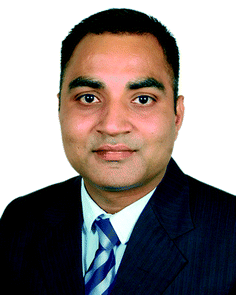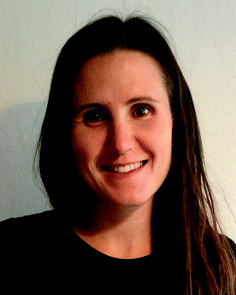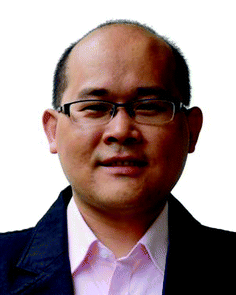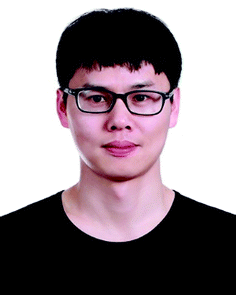Physical Chemistry Chemical Physics profiles: contributors to the Emerging Investigators 2021 issue
Physical Chemistry Chemical Physics is very pleased to welcome you to the 2021 Emerging Investigators themed collection, which highlights the excellent research being carried out by early career researchers in physical chemistry, chemical physics and biophysical chemistry.All contributors were nominated for the prestigious PCCP Emerging Investigator Lectureship and invited to contribute to this themed collection by the Editorial Board. These researchers are making outstanding contributions to physical chemistry, chemical physics and biophysical chemistry and are the rising stars of these fields.
Their profiles are shown in this editorial and we congratulate them all on being featured. We wish them every success in their future research.
Join us in celebrating their contributions!
Thiago A. L. Burgo received his PhD from the University of Campinas, working on the triboelectrification of dielectric polymers. He joined the Argonne National Laboratory (Chicago, US) as a post-doc, investigating the exchange of electric charge at metal–insulator interfaces during friction force fluctuations. His research interests include scanning probe microscopy, triboelectricity, electrostatic adhesion, triboelectric technologies for energy harvesters and sensors, hygroelectricity and functional materials. He is now a professor at the Federal University of Santa Maria in Brazil and the current holder of the “2020 Rising Star Award” promoted by the Electrostatics Society of America. Currently, his research group is actively searching new ways to collect energy from the environment through electrostatic phenomena.
Siddhartha Das is currently an associate professor in the Department of Mechanical Engineering, the University of Maryland, US. Siddhartha received his PhD from the Indian Institute of Technology Kharagpur (IITKGP) in 2010 and postdoctoral training from the University of Twente (2009–2011) and worked as a Banting Fellow from the University of Alberta (2011–2013). Siddhartha's research interests are soft materials, nanomaterials, nanofluidics, and additive manufacturing. In recognition of his work, Siddhartha has received several awards and fellowships such as the Fellowship of the Royal Society of Chemistry, Fellowship of the Institute of Physics, IITKGP Young Alumni Award, etc.
Snehasis Daschakraborty is an assistant professor in the Department of Chemistry, Indian Institute of Technology Patna, India. He received his PhD from the S. N. Bose National Center for Basic Sciences (Jadavpur University), Kolkata in 2014. His broad area of research is on the molecular dynamics of liquids and biomolecules. He has been working on topics including the breakdown of the Stokes–Einstein relation in supercooled water, adaptation of cell membranes in extremophiles, permeation of nanoparticles across a lipid membrane, hydrophobic interaction in supercooled water, etc. He was a recipient of the INSA Medal for Young Scientists Award 2020 for his work in the dynamics of supercooled water. He has been elected as a member of the National Academy of Science, India (M. N. A. Sc.) in 2021. Details on his research group can be found at https://www.sdmdlab-iitp.com/.
Evelyne Deplazes is a senior lecturer at the University of Queensland and an adjunct research fellow at the University of Technology Sydney. She received her PhD in computational biophysics from the University of Western Australia in 2012. She then carried out postdoctoral work at the University of Queensland and Curtin University, funded by early-career fellowships from the Swiss National Science Foundation and the Australian National Health and Research Council. In 2019, she started her independent research group at the University of Technology Sydney, which she now continues at the University of Queensland after taking up the senior lecturer position in 2021. Her lab combines molecular simulations and biophysical chemistry experiments to study how small molecules and peptides interact with biological membranes and membrane proteins. The knowledge and tools from her research help develop new pharmaceuticals and understand fundamental processes such as membrane permeation or pore formation.
Antonio Franconetti received his PhD in Chemistry in 2016 from the Universidad de Sevilla, Spain, working on the preparation of new chitosan derivatives for multidisciplinary applications. After a postdoctoral appointment at Barcelona, he joined the group of Antonio Frontera at UIB working on non-covalent interactions from a computational perspective. In 2019, he moved to CIC bioGUNE, Bilbao, as Juan de la Cierva postdoctoral researcher. Since 2020, he has been the president of the Young Chemists division of the Royal Spanish Society of Chemistry (RSEQ). His research interests are focused on supramolecular chemistry, carbohydrates, and modelling.
Stefania Impellizzeri is an assistant professor in the Department of Chemistry and Biology at Ryerson University. She received a Laurea in chemistry from the University of Bologna, a PhD in chemistry from the University of Miami, and a Banting postdoctoral fellowship at the University of Ottawa. An expert in contemporary physical organic and materials chemistry, she studies the discovery of new strategies to couple molecules and nanostructured materials, and original applications of single-molecule fluorescence microscopy techniques (tools that are traditionally employed in the biological sector) for the study of chemical phenomena, materials properties, chemical reactions, and catalysis. Her applied research is focused on the design and synthesis of switchable fluorescent probes for bioimaging, digital processing and communications with molecules (i.e., sensing and molecular computing), and nanoengineered textiles and coatings. She is a member of the Royal Society of Chemistry, and the Board of Directors of Nano Ontario.
Jaroslav Kočišek received his PhDs in plasma physics from Comenius University in Bratislava in 2010, and in photo-dissociation dynamics from Charles University in Prague, 2013. After a postdoc studying electron scattering at the University of Fribourg and collisions of multiply charged ions at GANIL, he started a junior research group at the J. Heyrovský Institute of Physical Chemistry in 2016. Since 2019, he has held a recognized J. Heyrovský Young Scientist position. His research is focused on environmental effects on reaction dynamics and elementary processes in radiation interactions with living tissue, studied experimentally on model systems ranging from isolated molecules and clusters to self-assembled nanostructures.
Meng Li received his PhD in materials science and engineering under the supervision of Liang-Sheng Liao and Zhao-Kui Wang from Soochow University, P. R. China, in 2018. Currently, he is a postdoctoral research fellow in the laboratory of Antonio Abate at the Helmholtz-Zentrum Berlin für Materialien und Energie (HZB), Germany. His primary research interest is focused on organic and inorganic/organic hybrid materials for application in solar cells. His main research topic is non-toxic photovoltaic materials and devices for outdoor and indoor applications.
Kevin Lovelock held an Imperial College London Junior Research Fellowship from 2012 to 2015, followed by a year as a stay-at-home dad. In 2016 he was awarded a Royal Society University Research Fellowship, hosted by the University of Oxford; in 2017 he switched his fellowship to the University of Reading. His current research interests include studying ions in solution and at interfaces for energy applications using both laboratory and synchrotron X-ray spectroscopy.
Josh Makepeace moved to the UK from Australia in 2010 to undertake his doctoral studies at the University of Oxford. Imagining a four-year stay in the UK, life and opportunity intervened and he stayed in the UK for a postdoctoral position at the Rutherford Appleton Laboratory and a Junior Research Fellowship at St John's College, University of Oxford. Since October 2019 he has been a UKRI Future Leaders Fellow and lecturer in materials chemistry at the University of Birmingham. Josh has always been scientifically motivated by environmental concerns, and when outside the lab can be found in green spaces looking out for local birdlife.
Tom McCoy is a Research Fellow at the University of Cambridge. He completed his undergraduate and postgraduate degrees under the supervision of Rico Tabor at Monash University, Australia, looking at the colloidal properties of 2D carbon nanomaterials. Currently, his research focuses on the understanding and optimisation of engine oil formulations and anti-fouling coatings using colloidal building blocks to assist in reducing energy consumption and carbon dioxide emissions from transport industries. This work takes place in the Department of Chemical Engineering and Biotechnology at Cambridge, in the lab of Alex Routh. Tom's other research interests include surfactants and self-assembly and using scattering techniques to elucidate structure–function relationships in colloidal and soft matter systems.
Costanza Montis is an assistant professor of physical chemistry at the Department of Chemistry, University of Florence, and member of the Italian Consortium for Colloid and Surface Science (CSGI). She received her PhD in chemical sciences from the University of Florence in 2013. Her main research activity focuses on understanding complex phenomena occurring at interfaces, from a physicochemical perspective. Her scientific interests are in the physical chemistry of soft matter and include the biophysical understanding of nano–bio interfaces; the design of lipid–nanoparticle hybrid materials for biomedical applications; the engineering/characterisation of biogenic extracellular vesicles; and the study of nanostructured materials for applications in the restoration of works of art.
Alvaro Muñoz-Castro received his PhD degree in molecular physical-chemistry, 2010, at the Universidad Andres Bello, Chile, under the direction of Ramiro Arratia-Pérez in relativistic computational chemistry of inorganic species. Currently he is a full-time professor at the Universidad Autónoma de Chile, since 2014. His research interests range from molecular clusters and superatoms, endohedral metallofullerenes, host–guest species, and carbon nanostructures, involving the understanding of magnetic response, optical, luminescence, electron-delocalization, and structural properties. He is part of the international advisory editorial board for ChemPhysChem. His achievements have been recorded to date in more than 220 publications and three book chapters, and four supervised PhD theses, being part of a strong national and international network.
Milan Ončák is a theoretical chemist interested in photophysics, photochemistry, and photodynamics. He obtained his PhD in 2013 with Petr Slavíček at the University of Chemistry and Technology, Prague, and spent several years as a postdoc with Joachim Sauer at Humboldt University, Berlin, as a Alexander von Humboldt Fellow, and with Martin K. Beyer at the University of Innsbruck, as a Lise Meitner Fellow. Currently, he is an assistant professor at the University of Innsbruck. He is working on a range of topics including aerosol photochemistry, photochemistry in solids, photocorrosion and hydrogen evolution involving hydrated metal ions, and dissociative electron attachment of radiosensitizers.
Alessio Petrone received his PhD in chemical sciences at the University of Napoli Federico II, Italy, in 2014. Then, he spent almost 5 years as a research associate in the US, working at the University of Washington, Seattle, US, being part of the US National Center of Excellence University of Washington Molecular Engineering Materials Center. Since 2019, he has been an assistant professor (RTD-A) at the University of Napoli Federico II in Napoli, Italy, in the Department of Chemical Sciences. His research focuses on theoretical modeling of non-equilibrium processes of photo-generated species and on developing ab initio molecular dynamics techniques for time resolved spectroscopy. Photo Credit: Shichao Sun.
Mhejabeen Sayed obtained her PhD (2012) in chemistry from the University of Mumbai, India. She joined the Chemistry Department at the School of Science, Narsee Monjee Institute of Management Studies, Mumbai, as an assistant professor for a brief period. Later, she joined the Radiation and Photochemistry Division of the Bhabha Atomic Research Centre (BARC), Mumbai, India, initially as a prestigious K. S. Krishnan Research Associate, and finally as a Scientist, after successful completion of a research associateship. Her research interest includes supramolecular and suprabiomolecular photochemistry involving both macrocyclic hosts (cyclodextrins, calixarenes and cucurbiturils) and biomacromolecules (proteins and DNA), exploring the enhanced stabilization and solubilization of dyes/drugs and their controlled binding and release, to find applications in drug delivery mechanisms, molecular sensors, on–off switches, catalysis, aqueous dye lasers, and so on. Her research interests also include understanding the excited-state processes, solvatochromism, and electron and proton transfer processes in biologically important dyes/drugs.
Shaama Mallikarjun Sharada has been a WiSE Gabilan assistant professor in the Mork Family Department of Chemical Engineering and Materials Science since 2017 and assistant professor (by Courtesy) in the Department of Chemistry at the University of Southern California since 2020. Her research interests span the development and application of quantum chemistry and dynamics methods to design molecular, heterogeneous, and photo-catalysts for sustainable chemistry. She received her Bachelors and Masters in Chemical Engineering from the Indian Institute of Technology, Bombay, India, where she was awarded the Institute Gold Medal. She received her PhD in Chemical Engineering from UC Berkeley in 2015, and completed her postdoctoral training in Chemical Engineering at Stanford University. She is a recipient of the 2020 ACS Petroleum Research Fund Doctoral New Investigator Award and is a 2020 Scialog Fellow for the Negative Emissions Science initiative.
Veerendra K. Sharma is currently working as a scientist at the Solid State Physics Division of Bhabha Atomic Research Centre, Mumbai. He obtained his doctoral degree from Homi Bhabha National Institute, India, in 2013 and subsequently carried out his postdoctoral research at Oak Ridge National Laboratory, US, 2014–16. His research interests include soft condensed matter, confined fluids, deep eutectic solvents and energy materials. In recognition of his contributions, he has been inducted into all three national science academies of India in their younger leagues. He has been elected as an associate of the Indian Academy of the Sciences (IASc), and as a member of the Indian National Young Academy of Sciences (INYAS) and the National Academy of Sciences (NASI), India. He has received a number of accolades including the NASI-Young Scientist (2019), Indian Physical Society-Best Young Physicist (2018), and DAE-Young Scientist (2013).
Morgane Vacher is currently working as a CNRS researcher at the University of Nantes, France, within the CEISAM laboratory. She received her PhD degree in theoretical and computational chemistry from Imperial College London, United Kingdom, in 2016 supervised by Mike Robb and Mike Bearpark. She then worked as a postdoctoral researcher at Uppsala University, Sweden, with the group of Roland Lindh. Since late 2019, she was appointed as a CNRS researcher. Her research interests include theoretical photochemistry and non-adiabatic dynamics of molecular excited states using direct ab initio methods, and the application of attosecond science to chemistry.
Yong-Lei Wang received his PhD degree in physical chemistry from Jilin University in 2012, and Stockholm University in 2013. Thereafter, he worked as a postdoctoral research fellow at Stockholm University and KTH Royal Institute of Technology. He received financial support from the Knut and Alice Wallenberg Foundation in 2016 and worked as a Wallenberg Fellow at Stanford University and Stockholm University. He is currently a research scientist at Helmholtz-Zentrum Berlin for Materials and Energy and a guest researcher at Stockholm University. His research interests include numerical algorithm development for efficient handling of long-range Coulombic interactions, multiscale modelling of ionic fluids and polymeric electrolyte materials used in electrochemical devices, and computational studies of luminescent properties of transition-metal complexes in biological systems.
Zhijie Yang received his MSc in chemistry from Shandong University in 2010 and earned his PhD in 2014 from the Université Pierre et Marie Curie (now Sorbonne Université) under the supervision of Marie-Paule Pileni. From 2014–2015 he held a postdoctoral position in Pileni's research group at Sorbonne Université. From 2016 to 2018 he held a postdoctoral position at the Center for Soft and Living Matter of IBS in South Korea. He was appointed full professor in physical chemistry at Shandong University in 2018. His current research interests are focused on the surface chemistry of nanoparticles and hybrid materials from chemical self-assembly.
| This journal is © the Owner Societies 2022 |

